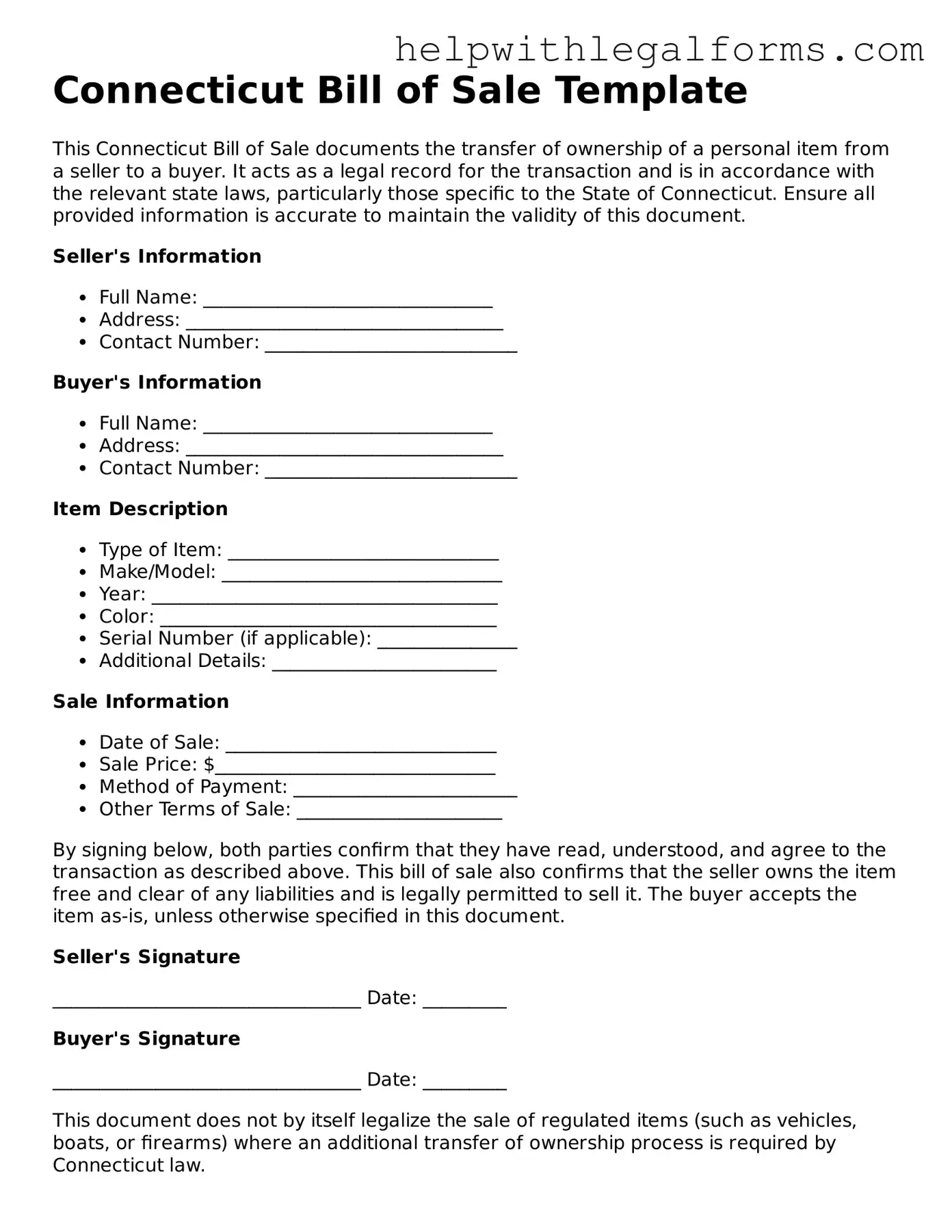Connecticut Bill of Sale Template
This Connecticut Bill of Sale documents the transfer of ownership of a personal item from a seller to a buyer. It acts as a legal record for the transaction and is in accordance with the relevant state laws, particularly those specific to the State of Connecticut. Ensure all provided information is accurate to maintain the validity of this document.
Seller's Information
- Full Name: _______________________________
- Address: __________________________________
- Contact Number: ___________________________
Buyer's Information
- Full Name: _______________________________
- Address: __________________________________
- Contact Number: ___________________________
Item Description
- Type of Item: _____________________________
- Make/Model: ______________________________
- Year: _____________________________________
- Color: ____________________________________
- Serial Number (if applicable): _______________
- Additional Details: ________________________
Sale Information
- Date of Sale: _____________________________
- Sale Price: $______________________________
- Method of Payment: ________________________
- Other Terms of Sale: ______________________
By signing below, both parties confirm that they have read, understood, and agree to the transaction as described above. This bill of sale also confirms that the seller owns the item free and clear of any liabilities and is legally permitted to sell it. The buyer accepts the item as-is, unless otherwise specified in this document.
Seller's Signature
_________________________________ Date: _________
Buyer's Signature
_________________________________ Date: _________
This document does not by itself legalize the sale of regulated items (such as vehicles, boats, or firearms) where an additional transfer of ownership process is required by Connecticut law.
